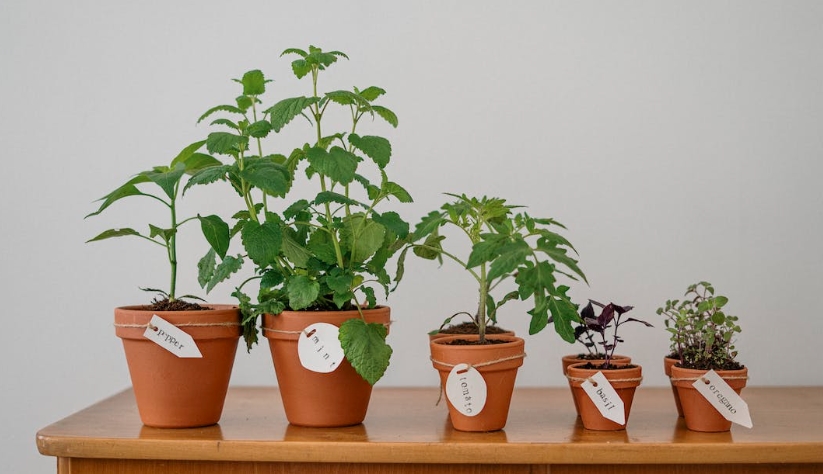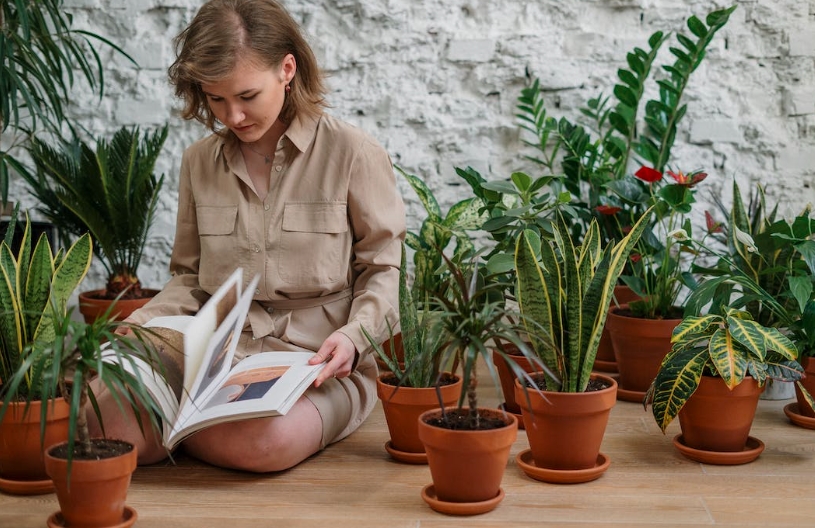Indoor gardening has become an increasingly popular activity in recent years, offering a number of benefits that are hard to ignore. With green thumbs indoors, you can grow a wide variety of plants in your home, and even create an indoor oasis that is both beautiful and calming. Green Thumbs Indoors: A Guide to Indoor Gardening is the perfect resource to get you started on your indoor gardening journey. From choosing the right plants to tips on how to keep them healthy, this guide is sure to help you create a thriving indoor garden that you can be proud of.
Green Thumbs Indoors: A Guide to Indoor Gardening covers all the basics for growing plants indoors. It explains the benefits of indoor gardening, such as improved air quality, stress reduction, and the ability to bring nature into your home. The guide also provides a wealth of information on the types of plants that are suitable for indoor gardening, such as succulents, cacti, ferns, tropical plants, and more. With this guide, you can learn about proper care, such as lighting and water requirements, as well as tips on how to encourage growth and keep your plants healthy.
Green Thumbs Indoors: A Guide to Indoor Gardening is the perfect resource for anyone interested in starting their own indoor garden. With this comprehensive guide, you can learn how to choose the right plants, create a beautiful space, and keep your plants thriving. Whether you’re a beginner or an experienced gardener, this guide will help you create an indoor oasis that you can be proud of.

Planning Your Indoor Garden:
Choosing the Right Location:
When selecting the right location for your indoor garden, consider the amount of sunlight the area will receive, as well as the temperature and humidity level of the space. Ensure that you choose a spot that is well-ventilated and allows for plenty of airflow. Also, make sure that the area is large enough to accommodate all of your plants and containers.
Assessing Lighting Needs:
Depending on the type of plants you are growing, you will need to determine how much light they require. Consider the amount of sunlight that is available in the space, as well as the type of artificial lighting you may need to supplement natural light. Additionally, you may want to invest in light-adjustable grow lights to help control the amount of light your plants receive.
Selecting the Right Containers:
Choosing the right containers for your plants is essential to ensure they have adequate drainage and soil, as well as enough room to grow. You may want to consider clay pots, plastic containers, hanging baskets, or window boxes. Make sure to select containers that are the right size for your plants and have enough drainage holes at the bottom.
Choosing the Right Soil:
The type of soil you choose for your indoor garden will affect the health of your plants. Generally, you will want to use a potting soil that is specifically designed for indoor plants. Make sure to select a soil that is rich in nutrients and has excellent drainage. Additionally, you may want to add a layer of compost or mulch on top to provide additional nutrients and moisture.
Plant Care:
Watering:
Watering is an essential part of plant care. It is important to water plants regularly to ensure they have enough moisture. Different plants have different watering needs and it is important to know the specific needs of the plants you are taking care of. In general, plants should be watered when the soil is dry and avoid overwatering to prevent root rot. It is also important to water the plants at the right time of day. Morning is usually the best time to water plants.
Fertilizing:
Fertilizing is also an important part of plant care. Fertilizers provide essential nutrients to plants which help them to grow strong and healthy. Different plants require different fertilizers and it is important to know the specific needs of the plants you are taking care of. Different types of fertilizers are available, such as organic fertilizers, chemical fertilizers, and slow-release fertilizers. It is important to follow the instructions on the fertilizer packaging carefully.
Pests and Diseases:
Pests and diseases can be a major problem when it comes to caring for plants. It is important to regularly inspect plants for signs of pests and diseases. Common signs of pests and diseases include wilting, discoloration, and unusual growth patterns. If pests and diseases are spotted, it is important to take action immediately to prevent the problem from getting worse. This may include using pesticides or biological controls.
Pruning and Training:
Pruning and training are important for keeping plants healthy and promoting new growth. Pruning involves cutting away dead or diseased branches and leaves to improve the overall shape and appearance of the plant. Training involves tying or wiring branches to support and direct their growth. Both pruning and training should be done carefully and only when necessary.
Popular Indoor Plants:
Succulents and Cacti: Succulents and cacti are some of the most common indoor plants. They are incredibly easy to care for and require minimal maintenance. Succulents are great for adding texture and color to your home, and cacti are perfect for adding a unique touch to any room. They are adaptable to a variety of light and temperature conditions, making them an ideal choice for those who don’t have a lot of time to dedicate to plant care.
Herbs: Herbs are a popular indoor plant choice, as they are easy to care for and can provide flavor to your favorite dishes. Herbs require lots of sunlight and regular watering, but they can thrive in any indoor environment. They are also great for adding a touch of greenery to any kitchen or living space.
Ferns: Ferns are popular indoor plants because they are easy to care for and require minimal maintenance. Ferns can tolerate low light levels and prefer to be in humid environments. They are also great for adding a touch of greenery to any room in the home.
Foliage Plants: Foliage plants are an ideal choice for those looking to add a touch of greenery to their home without having to dedicate a lot of time to their upkeep. Foliage plants are incredibly easy to care for and require minimal maintenance. They are also great for adding texture and color to any room.
Flowering Plants: Flowering plants are a great way to add a touch of color and beauty to your home. They are easy to care for and require minimal maintenance, making them an ideal choice for those who don’t want to spend a lot of time tending to their plants. Flowering plants come in a variety of colors and sizes, so you can find the perfect one to suit your home’s style.
Advanced Techniques:
Hydroponic Gardening: Hydroponic gardening is an advanced gardening technique that involves growing plants in a nutrient-rich solution instead of soil. This method is ideal for saving space and providing a controlled environment for plants to thrive. The nutrient-rich solution is usually made up of a mixture of minerals, water, and oxygen which gives the plants everything they need to survive and grow. By using this method, the need for soil is eliminated, which allows growers to create a more efficient and clean growing environment.
Vertical Gardening: Vertical gardening is a great way to maximize growing space in a small area. It involves growing plants vertically up a wall, trellis, or other structure, rather than horizontally across the ground. This technique allows for plants to grow in a more compact form, making it possible for a garden to be smaller in size but still have a large yield. It also allows for more efficient use of space, since many plants can be grown in the same area.
Terrariums: Terrariums are a unique way to create a miniature garden in a confined space. They are usually made out of glass or plastic containers which are filled with soil and plants. This type of gardening is excellent for anyone who doesn’t have a lot of space or time to devote to gardening. It is also great for those who want to bring a little bit of nature indoors. Terrariums are relatively easy to set up and maintain, and they can provide a great source of oxygen for the home.

Troubleshooting:
Troubleshooting Common Issues in Indoor Gardening
Paragraph Output: Indoor gardening is an enjoyable activity, but it can quickly become difficult when common issues arise. These issues can range from inadequate lighting to pests, and can be hard to identify and fix without experience. However, with the right knowledge and resources, anyone can solve the most common issues in indoor gardening and get back to enjoying their plants.
Bullet Points:
• Poor Lighting:
o Make sure you have the right light source and intensity
o Move plants closer to the light source and rotate them every few days
• Poor Soil:
o Use potting soil specifically designed for indoor plants
o Add organic matter to increase the soil’s nutrient content
• Pests:
o Inspect plants regularly for signs of pests
o Use natural pest control methods such as introducing predatory insects or spraying with neem oil
• Overwatering:
o Check the soil moisture level before watering
o Allow the top inch of soil to dry out before watering again
• Underwatering:
o Check for signs of wilting and yellowing of leaves
o Increase the frequency of watering, but don’t overwater
Conclusion
Green Thumbs Indoors: A Guide to Indoor Gardening has provided readers with a comprehensive and detailed guide to successfully cultivating an indoor garden. With clear and concise instructions on how to select plants, how to care for them, and how to ensure their health and well-being, it is a wonderful resource for anyone looking to cultivate their green thumb indoors. This guide has also provided readers with invaluable insight into the basics of soil and light, and how to choose the best environment for their plants. With the knowledge and expertise found within this guide, readers can now confidently embark on their journey to creating a healthy and thriving indoor garden. Whether they are looking to cultivate a few houseplants or create a lush oasis of foliage, this guide will be a useful reference to help them create the perfect environment for their plants. With the right tools and guidance, anyone can now become a successful indoor gardener.
FAQs
1. What plants are best for indoor gardening?
The best plants for indoor gardening depend on the amount of light available and the temperature in your home. Some popular choices include herbs such as basil, mint, and oregano, leafy vegetables like lettuce and kale, flowering plants such as African violets, and small fruit-bearing plants such as tomatoes and strawberries.
2. What supplies do I need for indoor gardening?
The supplies you need for indoor gardening will depend on the type of plants you choose. Generally, you’ll need pots, soil, fertilizer, a container for drainage, and possibly a grow light.
3. What type of soil should I use for indoor gardening?
The type of soil you use for indoor gardening will depend on the type of plants you choose. Generally, a blend of organic potting soil and compost is recommended.
4. How often should I water my indoor plants?
Watering your indoor plants will depend on the type of plants you have, the size of the container, and the temperature and humidity levels in your home. Generally, most plants should be watered when the top inch of soil is dry.
5. How much light do indoor plants need?
The amount of light your indoor plants need will depend on the type of plants you have. Generally, most plants need at least 6 hours of indirect sunlight per day.
6. What is the best way to fertilize indoor plants?
The best way to fertilize indoor plants is to use a liquid fertilizer diluted to half strength and applied every two weeks.
7. What is the best temperature for indoor plants?
The best temperature for indoor plants will depend on the type of plants you have. Generally, most plants do best in temperatures between 65 and 75 degrees.
8. What pests should I be aware of when growing indoor plants?
The pests you should be aware of when growing indoor plants will depend on the type of plants you have. Common indoor plant pests include aphids, spider mites, and mealybugs.
9. How can I tell if my indoor plants are getting enough nutrients?
The best way to tell if your indoor plants are getting enough nutrients is to test the soil for pH and nutrient levels. If the levels are low, you can add fertilizer to the soil.
10. How can I prevent my indoor plants from getting too much sun?
The best way to prevent your indoor plants from getting too much sun is to place them in an area with indirect light. If you’re concerned about sunburn, you can also use a sheer curtain to filter the light.


















